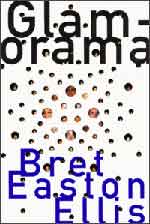| Music | Literature | Film | Index | About |

|
Glamorama, Bret Easton Ellis Alfred A. Knopf, December 29, 1998 No, the letter is not real, at least not yet. I do not take offense. Glamorama has been recommended to friends before. The ones who finish it often look at me like I have lost my mind, of course, after trying to avoid the subject and me for weeks. “The book is vapid!” “Retread!” The classic line “What’s the point?” lacks as much originality as the critic lodging the charge. I do not mean to suggest that the rejection of something I admire so much does not pack a punch because the opposite is true. The pleasure derived from reading a book is an intensely personal experience to protect, and I really, really want everyone to recognize the novel for what it is: a masterwork authored by one of the most maligned and misunderstood American writers today, working at the top of his game. What I am expressing, however, is that the hits will never silence my unwavering praise for a tome that captures the Zeitgeist at the turn of the millennium and beyond better than any other fiction published by the author’s contemporaries. My enthusiasm cannot be crushed because the esteem is that high and strong. I will fight for it. Specks are a theme in the novel from the cover art (hardback edition), which has sprinkled circular peephole cut-outs on the book’s jacket framing glossy photos of the faces of celebrities like Madonna, Keanu Reeves, Princess Diana and Brad Pitt in floating bubbles on the book’s hardcover behind, to the very first word in the opening paragraph on page one, in which male model/club promoter, Victor Ward, walks through his latest and most fabulous venue barking disgust with miniscule splotches visible in the decor: “Specks—specks all over the third panel, see?—no, that one—the second one up from the floor and I wanted to point this out to someone yesterday but a photo shoot intervened and Yaki Nakamari or whatever the hell the designer’s name is—a master craftsman not—mistook me for someone else so I couldn’t register the complaint, but, gentlemen—and ladies—there they are: specks, annoying, tiny specks … goddamnit, what’s the story?” The motif recurs throughout but most spectacularly in a scene late in the novel, when a 747 jetliner, carrying two tons of party confetti to America in the cargo hold, blows up over France in a way that is eerily reminiscent of TWA Flight 800, the ill-fated passenger plane that mysteriously exploded over the shores of Long Island, NY on July 17, 1996: … a wind billows across the wreckage, the moon rises into an expanse of sky so dark it’s almost abstract, confetti and glitter continue raining down. Aviation fuel starts burning the trees in the forest, the word CANCELED appears on a big black arrival board at JFK airport in New York, and the next morning, as the sun rises gently over the cleanup crews, church bells start ringing and psychics start calling in with tips and then the gossip begins. The cabin is naturally filled with mostly young beautiful people, who perish along with their fashion magazines, Prada purses and Calvin Klein underwear. All the debris mixes indistinguishably into infinitesimal flakes of nothingness. With bravado, the author, Bret Easton Ellis, associates the physical specks of Victor’s world with the flashes of famous faces that pepper the clubs (and don the cover of the book) to the nameless, faceless microbes to which we return at the moment we meet our ultimate fates. Moreover, a connotation develops between the insecurities bred into our society, as a result of celebrity obsession and the fear of terrorism. (Note: The book’s publication pre-dates the horrific events of September 11, 2001, and TWA Flight 800’s demise has since been ruled a freak accident and not an international terrorist act, even though suspicions still surround the crash.) Lists and minimal punctuation remain part of Ellis’s style, but their usage is more refined than in previous works, which seemed to please some critics. Holding back in a book about excess is not a requirement for anyone open to the material, though. Identity is crucial to the dizzying mosaic, and any plethora of names is intended to blend into unrecognizable insignificance. Prepare for scenes of almost unbearable violence and empathy, and do not forget to laugh. Ellis is foremost a satirist, and he brings disparate elements together in his condemnation in ways that guarantee to keep one’s mouth aghast. He is also cognizant of his naysayers, which surly explains why Victor slyly questions, “What’s the story?” at the onset. The story, Pissed-off in Portland, is all around us and reading or revisiting Glamorama nearly ten years post its publication points the spotlight even more sharply in its direction, illuminating what could otherwise be an inconspicuous fleck on a bookstore shelf. -MEG
|
 |
||||||